Crooked or misaligned teeth are a common oral health concern among both children and adults. This frustrating condition may lead to a number of serious oral health issues while also damaging a person’s self-image and confidence.
Fortunately, crooked teeth are a fixable problem, thanks to orthodontics—the branch of dentistry devoted to addressing jaw and bite issues, including misaligned teeth.
In the sections below, we’ll cover all you need to know to gain the confidence to seek professional help for your crooked teeth. We’ll review the causes, consequences, and treatment options for this common and highly treatable condition.
Causes of Crooked Teeth
Most people aren’t born with perfect teeth. In fact, around 65% of American adults have at least some degree of misalignment. The issue may be minor and barely noticeable, or severe.
Tooth alignment is partly genetic. You’re more likely to have crooked teeth if your parents had them. In genetic cases, the size of your jaw and teeth may cause your teeth to fill your mouth unevenly, resulting in crowding, gaps, and odd angles.
Crooked teeth can also be caused or exacerbated by childhood events, such as prolonged thumb sucking, poor nutrition, or a premature loss of baby teeth. Accidents like car crashes or falls can create an additional likelihood of knocking teeth out of alignment.
Additionally, poor oral hygiene or a lack of professional dental care can create or worsen crooked teeth. The good news is, it’s never too late to start taking care of your teeth!
Consequences of Crooked Teeth
Crooked teeth are more challenging to brush and floss, and chewing may be more difficult or occur asymmetrically. As a result, people with misaligned teeth are more likely to experience common dental health issues and mouth problems, such as:
- Tooth decay
- Gum disease
- Bad breath
- Temporomandibular disorder (jaw pain)
Crooked teeth may also cause speech problems and even impact breathing, leading to sleep apnea.
For many folks, the worst effects of crooked teeth are psychological and social. If you don’t like the look of your smile, this can lead to significant self-esteem issues or social anxiety.
Treatment Options for Crooked Teeth
Patients who choose to straighten their teeth may discuss several treatment options with an orthodontist.
The most familiar treatment is metal braces. This approach uses braces, wire, and rubber bands to exert gradual pressure on teeth and jaws to achieve a healthy smile over time. Alternatives to metal braces include ceramic braces, which are less visible (but also more expensive), and self-ligating braces, a more recently-developed metal brace system that doesn’t require rubber bands.
Another option is clear aligners, such as Invisalign. Clear aligners are nearly invisible and easily removed, providing major advantages in convenience and appearance.
After braces or aligner treatment, a retainer is typically worn for between four months and a year to help teeth maintain their new and improved alignment.
Additionally, some less common or more severe orthodontic issues may call for treatments like tooth extraction, orthognathic surgery for jaw realignment, or palatal expanders for widening a narrow jaw.
Choosing a Crooked Teeth Treatment: Factors to Consider
When deciding on a treatment method for your crooked teeth, consider these factors:
- The severity of the problem and the recommended treatment that’s most likely to offer great results
- Aesthetic preferences
- Budget and insurance coverage
When you meet with your orthodontist for the first time, they’ll examine your teeth, discuss your concerns, and make a recommendation for the option that best suits your needs.
Tips for Maintaining Oral Health During Crooked Teeth Treatment
As you begin treatment for your misaligned teeth, be prepared to up your dental hygiene game and make a few lifestyle changes to ensure the best results. Practice high-quality brushing and flossing and follow your orthodontist’s recommendations, such as extra cleaning for metal braces or wearing Invisalign aligners for the proper number of hours per day.
You’ll also want to adjust your diet. Some foods to avoid with braces or aligners include:
- Chewing gum
- Popcorn
- Hard candy
- Chewy bread products like bagels or pizza crust
- Crunchy fruits and vegetables like whole apples or raw carrots
If you need to stop eating some favorite foods, there are always alternatives for making sure you enjoy your meals and get the nutrition you need. Ask your orthodontist or family doctor for guidance if you’re worried about food choices during orthodontic treatment.
Get Treatment for Crooked Teeth in St. Augustine, FL Today
Your crooked teeth won’t fix themselves, so what are you waiting for? To explore your treatment options in St. Augustine, Florida, contact Henry Advanced Orthodontics today to schedule a free consultation.
